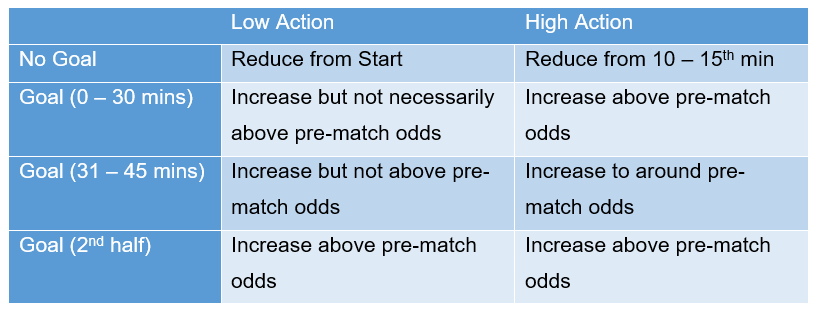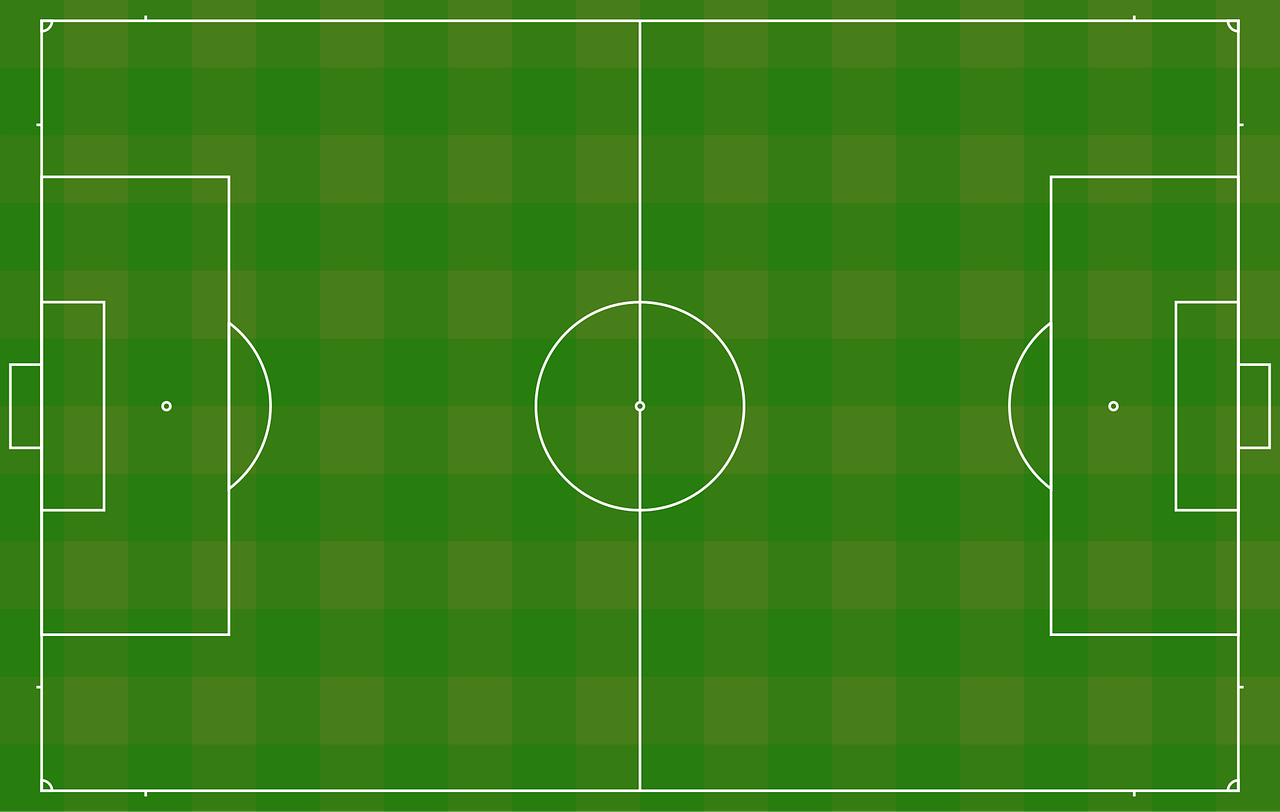If you want to trade football odds, you will usually need to study how football odds change. There are pros and cons when the 2 teams are closely matched.
In these matches, the 2 teams will be favourites, while the draw will have the longest odds.
This is an updated article. When I first wrote this article, I was interested in laying the draw. Nowadays, I prefer to predict which team will score the first goal and bet on a team.
That said, the goal of article is to help traders, who have an interest in laying the draw.
A. The Advantage of Trading the Draw in Close Matches
There is an important advantage in trading in matches, where the 2 teams are closely matched. That is, the odds will move in the same way and by the same magnitude whichever side scores. They will also move in the same way if neither team scores. In this post, I will deal with the following 2 main situations:
- When a goal is not scored
- When a goal is scored
I will use a match between Chelsea and Tottenham as an example. The odds are as follows:
| Chelsea | Draw | Tottenham | |
| Odds | 2.8 | 3.4 | 2.8 |
If a goal is scored, the odds of the team that scored the goal will reduce, while the odds of the other team will increase. In this post, I will focus on the changes in the odds of the draw and the correct scores.
B. Effects of Goals on the Draw Odds
Obviously, a goal will influence the odds of the draw. However, there are several other factors that influence the odds of the draw. The time of the goal and the side that scores will have an effect. In addition, the amount of anticipated end-to-end action will have an effect.
If a team leading 1-0 goes after a second goal, there is likely to be another goal. This is because both teams will be trying to score a goal. In this situation, the game is likely to be open. However, if the leading team attempts to just defend their 1-0 lead, this would reduce the chances for both sides to score a goal. Therefore, post-goal strategy will have an impact on the odds. For this reason, it is important to follow teams and understand each team’s strategy before and after the first goal. In addition, you should identify each team’s strategy when they are the favourite, the outsider, and evenly matched.
1. No Goals are Scored
From the start of a match, if no goals are scored, the odds of the draw will start to reduce. The time at which they start to reduce will be dependent on the amount of action in the game.
You can get a handle on the amount of action pre-match by looking at the pre-match correct score odds. The higher the odds of 0-0, the more anticipated goals in the match.
However, it’s worth looking further. In most matches, 1-1 will have the shortest odds in the list of correct scores. If a higher score is very close to (or even shorter than) the 1-1, this means more goals are anticipated in the match.
a) An Action Packed Start
If the game starts fast, with a lot of end-to-end action and goal-scoring chances, the odds on the draw will stay steady for up to 15 minutes. After 15 minutes, the odds of the draw will start to reduce and will continue to reduce until a goal is scored.
b) A Slow Start
At the other extreme, if the game gets off to a slow and scrappy start, the odds on the draw will reduce from the start of the game.
You need to follow teams to predict how a game will start. At the time of writing this article, Liverpool were super-fast out of the gates. They were aggressively looking for a goal as soon as the game started.
However, there were other strong teams, who would start slower. If they didn’t score a goal by half-time, they would become more aggressive, in the hunt for goals, in the second half.
In this case, the strategy is, the favourite aims to take the lead with minimal risks in the first half. If they fail to take the lead in the first half, they will open up in the second half.
2. The First Goal is Scored
If either team scores, the odds for the draw are likely to increase to above (or to the level of) the odds at kick-off. However, this depends on the following factors:
- The time of the first goal
- Whether the match was predicted to have a lot of goals
- Whether there has been a lot of action in the game
- Whether the leading team is likely to play defensively or aggressively
There is a lot of interplay between these factors. When teams are evenly matched, assessing how teams will adjust their strategy after the first goal requires more knowledge of teams, compared to a strong favourite/longshot scenario.
a) Goal in First 30 minutes
If a team scores in the first 30 minutes, the odds of the draw will usually increase to a level above the odds at kick-off. If the game was predicted to have a lot of goals, the odds on the draw tend to show a higher increase, relative to a game that was predicted to have a low number of goals.
b) Goal between 31 and 45 mins
If the first goal is scored in the 31-45 minute, the odds of the draw will usually only go up to around the level that the odds were at kick-off. However, it could be because there is more information as to how many goals are expected in the game.
A late first half goal could mean that the match is close and/or that there aren’t going to be many goals in the match. This would suggest that the score will end up at the current score or at the connecting scores of 2-0 and 1-1.
The closer to the end of the game that the first goal is scored, the more likely that the leading side will play defensively.
c) After an Early Goal
Immediately after an early goal (0 – 30 mins) is scored, the odds on the draw will increase to a level that is above the pre-match odds.
However, after this initial increase, the odds will gradually reduce. If no more goals are scored prior to half-time, the odds of the draw may even decrease to a level that is close to the pre-match odds.
d) When the First Goal is Scored in the Second Half
In general, when the first goal is scored in the second half, the odds of the draw will rise above pre-match levels. The later in the second half that the first goal is scored, the more the odds of the draw will increase.
C. Summary
This article is not meant as a system that readers can follow. You need more information than just how the odds are likely to change. Football is a game of strategy. Teams will use different strategies against different teams.
Table 1 is a summary table of how odds tend to change on the draw during a certain type of football match.
The type of match is where the odds of the 2 teams were close at the start of the match and the draw was the outsider.
I have included low and high action games in the table. The medium action games will produce results somewhere in between these 2 extremes.
Table 1: The Effect of Level of Action and Goals on the Odds of the Draw in Matches with Closely Matched Teams

